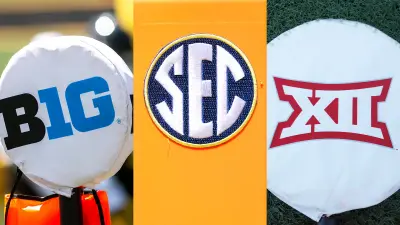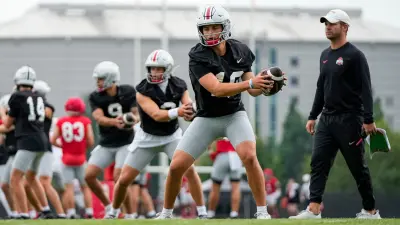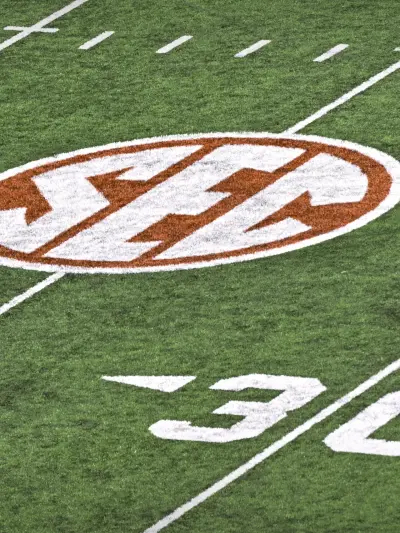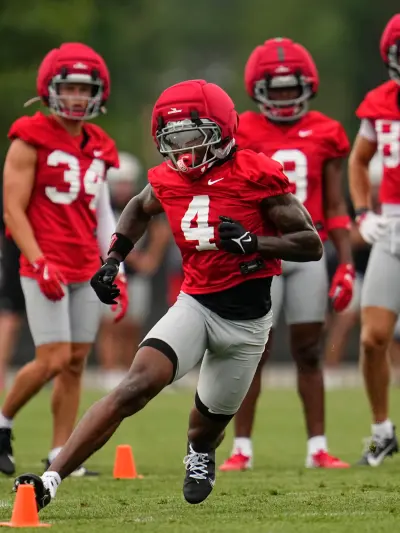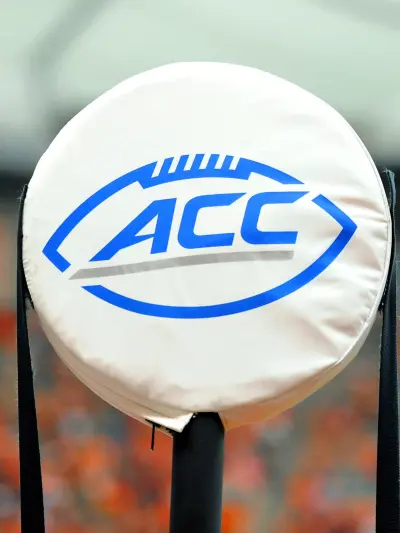With all of the latest realignment news, it’s an opportune time to look at a potential future with three super-conferences: Big Ten, SEC, and Big XII, each with 24 teams. Let’s walk through what this could look like and how everything would shake out.

Big Ten:
Current 2024 Teams:
Illinois, Indiana, Iowa, Maryland, Michigan, Michigan State, Minnesota, Nebraska, Northwestern, Ohio State, Penn State, Purdue, Rutgers, UCLA, USC, Wisconsin
Additions:
Boston College, Clemson, Florida State, Miami (FL), North Carolina, Notre Dame, Oregon, Washington
Rationale:
Building off of the rumors circulating that the Big Ten is currently actively trying to add Clemson, Florida State, Oregon, and Washington, we’ll go ahead and add a few more ACC teams as that conference begins to implode. In BC, Miami, UNC, and Notre Dame, the Big Ten gets four more schools that fit the academic profile that they clearly prioritize.
While Clemson, Florida State, and Miami solidify a presence in the southeast, the additions of North Carolina and Boston College help shore up the rest of the eastern seaboard, giving them a presence from New England through South Beach. Notre Dame finds a home in the conference they’ve always belonged in, as their historic rivals of USC, Michigan, and BC are already part of the league in this scenario.
Not only would this configuration create a powerhouse in football, but men’s and women’s basketball would also be outstanding.
The trickiest part of this alignment would be creating divisions in football, which would be a necessity. The logical way would be to split it into four divisions with six teams each, but with only four teams on the west coast, it makes it so that two teams from the central time zone would be forced to join them, with the most likely candidates being Nebraska and Iowa. And since we’re trying to avoid another Legends and Leaders debacle, we need to avoid throwing divisions together willy-nilly. Let’s take a look at how that could play out:
More Sports News
As you can see, there’s not really a perfect match in terms of geography. Either Rutgers, BC, or Penn State ends up in the South, which doesn’t quite fit.
What fits better geographically – at least in my opinion – is a scenario where there are six “pods” with four teams each.
Teams would play their pod every year, plus rotate through other pods on a yearly basis, and play the teams in the other four pods that finished in the same place they had in the previous year, much like the NFL. This creates 11 conference games and allows for one non-conference game per year.
For example, if Pod 1 and Pod 2 were paired up this season, USC would have a schedule consisting of:
- UCLA
- Oregon
- Washington
- Nebraska
- Minnesota
- Iowa
- Wisconsin
- Illinois (top finisher in pod 3 from 2022)
- Michigan (top finisher in pod 4 from 2022)
- Penn State (top finisher in pod 5 from 2022)
- Clemson (top finisher in pod 6 from 2022)
- One non-conference game
The teams with the two best records would play for the conference title, and tiebreakers would be determined in a similar manner as they are now. Is 11 conference games too many? Maybe. But in a college football landscape that has been completely torn asunder, the need for out-of-conference matchups is seriously limited.

SEC
Current 2024 Teams:
Alabama, Arkansas, Auburn, Florida, Georgia, Kentucky, LSU, Mississippi State, Missouri, Oklahoma, Ole Miss, South Carolina, Tennessee, Texas, Texas A&M, Vanderbilt
Additions:
Duke, Georgia Tech, Louisville, Memphis, NC State, Virginia, Virginia Tech, Wake Forest
Rationale:
Here, the SEC scoops up most of the remainder of the ACC as well as Memphis. This seriously beefs up the SEC’s basketball profile, putting it on par with their already dominant football portfolio and extending their lead in baseball. While these additions are not as strong as the Big Ten’s in football, what it does do is make the SEC as strong at basketball as anyone else and add a couple of elite baseball programs as well.
The footprint of the conference does not expand as much as that of the Big 10 or Big XII, but it does give them access to the key DC metro area (by way of UVA) and the growing population centers in North Carolina. Georgia Tech gets to return to the conference they started in back in 1932.
Unlike the Big Ten, the pods model doesn’t work quite as well geographically, so we’ll go to a four-division model.
The problem then becomes scheduling. Teams would obviously play all of the other teams in their division, but then the question becomes if they play the entirety of another division or if they play 1-2 teams from each of the other divisions. In my estimation, I would have the teams play two teams from each other division based on where they finished using the previous season’s records. The teams that finished in the top two of their own division would play the teams that finished in the top two of the other three divisions, teams that finished third and fourth would play the teams that finished third and fourth in the other divisions, and teams that finished fifth and sixth would play the teams that finished fifth and sixth in the other divisions.
Like the Big Ten, we have 11 conference games with one non-conference game available. Let’s take a look at how this would play out, using LSU as an example. Because they finished with the best record of anyone in Division 1 last season, their schedule would look like this:
- Texas
- Texas A&M
- Oklahoma
- Arkansas
- Missouri
- Alabama (1st in Division 2 in 2022)
- Mississippi State (2nd in Division 2 in 2022)
- Georgia (1st in Division 3 in 2022)
- Duke (2nd in Division 3 in 2022)
- Tennessee (1st in Division 4 in 2022)
- Louisville (2nd in Division 4 in 2022)
- One non-conference game
There are two ways to determine a league champion here – a four-team playoff between the winners of each division or just having the top-two teams record-wise face off, using the usual tiebreakers.
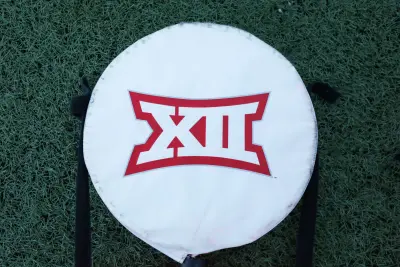
Big XII
Current 2024 Teams:
Baylor, BYU, Cincinnati, Colorado, Houston, Iowa State, Kansas, Kansas State, Oklahoma State, TCU, Texas Tech, UCF, West Virginia
Additions:
Arizona, Arizona State, Boise State, Cal, Gonzaga (Basketball only), Oregon State, Pittsburgh, Stanford, Syracuse, UCONN, Utah, Washington State
Rationale:
Bet you didn’t see Gonzaga coming, did you? The Bulldogs are at a place where they need to be in a power conference for basketball, so we’re adding them as a 25th team to league play.
But getting back to football, the Big XII ends up with a much larger footprint, including the key New York City market opened up by the addition of UCONN, as well as the west coast with the two California teams as well as Wazzu and Oregon State in the mix. Seeing as Colorado has already jumped ship back to the Big XII, the Big XII doubles down on the Rocky Mountains and gets all of the rest of the power programs in that area (including a bumped-up Boise State), as well as the two Arizona schools. The addition of Pittsburgh, Syracuse, and the aforementioned UCONN gives them a foothold in the northeast and beefs up an already strong basketball conference.
This is the conference with the trickiest divisions to shake out because of some geographic outliers, most notably UCF and Iowa State. But let’s try something different again, with three divisions with eight teams each:
In this scenario, teams would play all seven teams in their division annually, and then a matching scenario similar to that of the SEC where they play two teams from each other division based on the previous year’s standings. Again, we’ll have 11 conference games and one non-conference game. Using Utah as an example here, we would get the following based on 2022 standings:
- Cal
- Stanford
- Washington State
- Oregon State
- Boise State
- BYU
- Colorado
- Kansas State (1st in Division 2 in 2022)
- Texas Tech (2nd in Division 2 in 2022)
- TCU (1st in Division 3 in 2022)
- UCF (2nd in Division 3 in 2022)
- One non-conference game
A league champion would be determined by either matching up the two best records overall with the usual tiebreakers or having the winner of each division plus a wild card with the best record out of all the remaining teams.
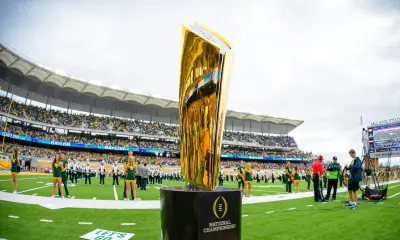
The Postseason
For football, there are a couple of potential avenues to take. The first would be to simply have a four-team playoff, with the winner of each conference plus one at-large bid to make it. The most logical might be an 8-team playoff with conference champions plus five at-large bids.
With that being said, there is also the potential for a 24-team FCS-style playoff. However, if that were to happen, there would need to be an elimination of conference title games, as those would be effectively useless as they would just be an opportunity for teams to rack up more injuries without any real benefit because any team that would make the conference title game would already have a good enough record to make the 24-team tournament.
In basketball, all teams would make the postseason tournament, with 55 teams getting a first-round bye and the bottom 18 playing head-to-head play-in games to set the field at 64.
This would be a massive undertaking for all programs involved but could reap benefits long into the future.
